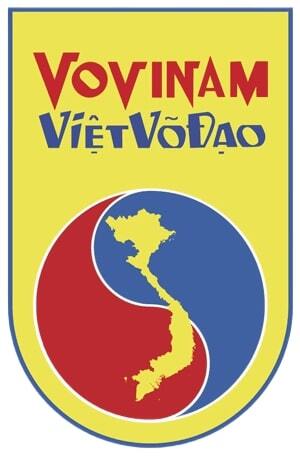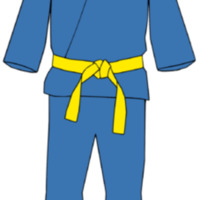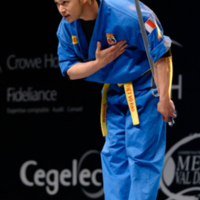Vovinam Việt Võ Đạo: Vietnamese Martial Arts
By Connor Quesenberry
Martial arts have long been an important part of cultures across all of Asia. Not many know that Vietnam boasts its own unique martial art, with over 60 schools in dozens of countries across the world. Vovinam Việt Võ Đạo was developed in 1938 by Nguyễn Lộc. He based the art on traditional Vietnamese and other Asian martial arts.
Nguyễn Lộc was born in the village of Huu Bang (now located on the outskirts of Hanoi) in 1912. During Lộc’s childhood, Vietnam was under colonial French rule. A young Lộc searched for a way to help his people free themselves from imperialism. Lộc researched traditional Vietnamese martial arts and Asian schools of philosophical thought in order to create a new style of martial arts.
In 1939, following the end of a 55 year ban on martial arts by the French, Lộc showed his new martial art to the Vietnamese public. The demonstration proved a big success, and traditional Vietnamese martial artists welcomed Vovinam In 1940, Lộc began the first Vovinam lessons at the Hanoi University of Education.
Soon after its first lessons, the French banned Vovinam, identifying it as anti-French. The French prohibited Lộc from teaching Vovinam, and many schools closed during this time. In reaction, when war between the Vietnamese and the French began in 1946, Lộc assembled his students to join the war effort. Many students of Vovinam fought in the war, and several became important commanders.
When the Viet Minh began to grow in power, Lộc, in fear of a communist regime, ordered all of his students to withdraw from the movement. Following this, the Viet Minh ordered the capture of Lộc. Lộc fled to his hometown, bringing some of his disciples with him.
After the war and the split of Vietnam between North and South, Lộc migrated to the south where he continued to grow his school of martial arts. In 1960, Lộc died at the age of 48. His senior disciple, Lê Sáng, took over as Master following Lộc’s death.
Vovinam focuses on training both one’s body and mind. Students learn many techniques, including usage of hand, elbows, legs, knees, and weapons, as well as counter-attacks, lock-ups and levers. Defense and offensive techniques are prioritized. Additionally, Vovinam is heavily based on the hard and soft principles. Hard and soft techniques are defensive techniques that may be hard (such as blocking a blow with a hard kick) or soft (such as using an attacker’s off-balance stance to throw them out of place).
One of the most famous techniques of Vovinam is the scissor kick. This involves placing one’s legs around another standing person’s neck, swinging around them, and using the force to throw them to the floor.
Nowadays, the World Vovinam Federation is the leading organization for the development of Vovinam worldwide. The martial art continues to grow, as evidenced by the numerous tournaments held yearly.




